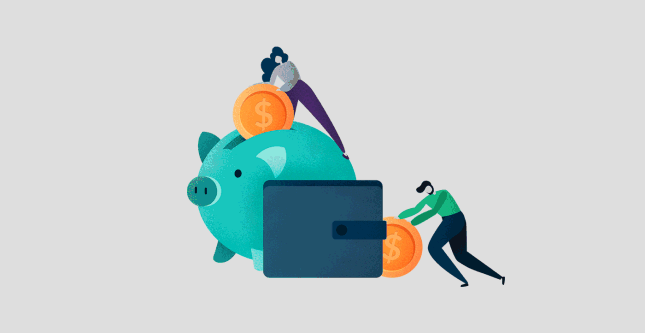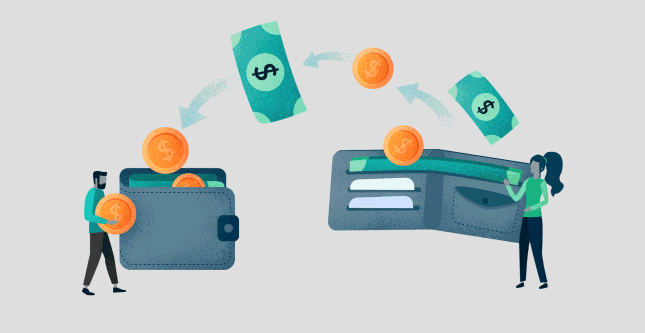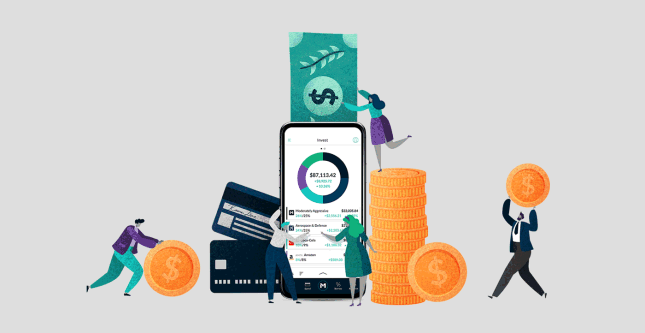What is a margin call and margin trading?
When you are buying on margin, you borrow money from a broker to purchase stock. Margin trading occurs when you use your broker’s money to purchase shares, and it can allow you to buy more stock than you otherwise could. In order to be able to do this, you must first open a margin account.
A margin loan consists of money that a broker lends to you to acquire additional stock. The margin interest is the interest that your brokerage charges for the loan. If the assets in your margin account fall below its margin requirement for a stock that you purchased, you can get a margin call. This is a demand from your broker that you deposit additional money or securities into your margin account so that potential losses and your margin debt can be covered. There are regulatory and minimum maintenance requirements for the margin of your account.
What is a margin account? Why would I want to set one up?
A margin account is a type of taxable brokerage account that provides you with financial leverage. The loan that you obtain will have to be repaid together with margin interest. In exchange for your ability to borrow money, you must have cash or securities deposited in your account to serve as collateral.
You cannot borrow money to purchase stocks from your broker unless you have a margin account. Buying stocks on the margin may allow you to purchase more shares which could potentially increase your profits.

Statistics on buying on the margin and margin calls
According to data from the Financial Industry Regulatory Authority, there was a total of $588.7 billion in margin debt balances in the securities margin accounts of U.S. customers during the most recent month for which data is available. The customers had a total available credit balance in their securities margin accounts of $178.5 billion.
Margin trading comes with risks, and if the shares fall below the margin requirements, a broker may issue a margin call.
How do margin calls work?
A margin loan can leverage your portfolio to magnify returns. However, investors should be aware there are potential losses as well. A brokerage firm has the right to sell the securities in your margin account without notice if you do not fulfill a margin call. Alternatively, the brokerage can pursue legal remedies against you if you fail to respond to a call. This means that your margin loan may carry higher risks.
How much can firms loan to a customer?
According to Regulation T of the Federal Reserve Board, you are allowed to borrow up to half of the purchase price of a stock through a margin loan. Some brokerage firms require investors to deposit more than 50% of the purchase price.
The firm has discretion about the allowed percentage of margin amounts among your investments. It can choose to restrict you from purchasing or owning certain bonds, stocks, ETFs, or mutual funds on the margin.
Margin account
A margin account is a type of brokerage account through which a broker can lend money to the investor to purchase securities. The margin loan is backed by the securities that are purchased together with cash. Margin interest can be charged periodically.
When a customer uses a margin loan to purchase stock, he or she is leveraging his account. This can magnify both the losses and gains. Margin trading carries higher risks and should only be used by experienced investors who understand them.
Short sales, commodities, and futures trades are only permitted in margin accounts. You cannot use a margin account to purchase stocks on the margin in an individual retirement account, a uniform gift to minor account, a trust, or another fiduciary account. All of these accounts require cash deposits.
Margin accounts cannot be used when you make the following types of purchases:
- Less than $2,000 of stock
- Stocks that are trading at $5 or less per share
- Stock offered in an Initial Public Offering (IPO)
- Stocks that are trading on exchanges other than the NYSE or the NASDAQ
How to open a margin account
There are other rules that you must follow to open a margin account. Under FINRA rules for margin requirements, you must have a minimum margin amount of $2,000 with your brokerage firm or 100% of the purchase price of the securities, whichever is lower. Some firms require that you have higher amounts on deposit in order to prevent a margin call.
Your initial margin is the amount in cash that you must deposit into your margin account before your broker will lend money to you to purchase a security. Your free margin refers to the amount that you have in your margin account that is available to you to take new open positions.

Margin trading
Margin trading is considered to be risky. Because of the potential risks involved with it, it is overseen by Regulation T of the Federal Reserve Board as well as regulations from the NYSE and the Financial Industry Regulatory Authority.
Your equity in the investment is the market value of the securities in your margin account minus the amount that you have borrowed from your broker. Because of the risks, buying on margin is normally used for short-term investments.
Maintenance margin
The maintenance margin is also known as the minimum maintenance or the maintenance margin requirements of your margin account. It is the minimum amount of equity that you must keep in your margin account, and the amount varies from broker to broker. Under federal law, the minimum margin requirements for maintenance is 25%.
The New York Stock Exchange and the Financial Industry Regulatory Authority both require customers to keep at least 25% of the total value of the securities that are held in their margin accounts. Many brokerage firms carry a higher minimum maintenance requirement that ranges from 30% to 40% because of the risk involved.
To calculate the minimum maintenance for your account in order to avoid a margin call, you can do the following. Take your equity as a percentage, which is the market value of your securities minus the borrowed funds. Then, divide that percentage by the market value of your securities.
For pattern day traders, FINRA has special margin requirements. They must have an increased minimum of $25,000 in equity. There is a limit in the margin accounts of pattern day traders on the purchasing power that is set at four times the maintenance margin excess at the close of business for the prior day for equity securities.

Triggers of a margin call
Several events can cause a margin call. If the shares fall below the minimum maintenance level, a call may be issued. If the assets also fall below initial or regulatory levels, a demand can also be issued.
If an investor cannot meet the margin requirements, the brokerage can close any open positions to bring the account back up to the minimum value without notifying the investor or gaining the investor’s approval. You can also be charged a commission for the transaction and will be liable for the losses that occur during this period.
If you receive a margin call and do not deposit money in a timely manner, your broker can liquidate the securities in your account for the amount that it needs to bring your account back up to the maintenance margin requirements.
How to avoid a margin call
There are steps that you can take to avoid a call. One its use protective stop orders to limit your losses. This strategy initiates at a fixed price level and ensures that that you will make a predetermined profit or loss.
It is generally advisable to be conservative when you are determining your risk management by limiting your losses and stops. Make certain to keep plenty of money and securities in your account, and do not over-leverage it. Reduce your effective financial leverage to lower your amount of risk.
Keep a sufficient amount of free margin in your account to be able to stay in your trades. Finally, trading in smaller amounts can help you to prevent a call from happening to you.
Margin call summary: What have we learned from this article?
To summarize, a margin call happens when the equity in your margin account falls below the margin requirements or maintenance margin, which are margin requirements of a certain percentage.
When your broker asks for a margin call, you must deposit money in your brokerage margin account to bring it back up to the minimum maintenance margin that was set by your broker. Normally, you will have two to five days to meet the demand.
If you are unable to meet the required amount, your brokerage firm can sell your open positions without your permission in order to bring your account back up to its minimum value. Your brokerage can also charge you a commission for the forced trades it completes.

Borrow on your terms with M1 Finance
M1 Finance is a brokerage firm that offers a combination of traditional brokerage investment principals together with robo-advisory services. It also offers a program called M1 Borrow, that allows you to borrow up to 40% of the balance of your portfolio through a flexible line of low interest credit.
M1 Borrow is a simple, low-cost way to borrow money. You don’t have to submit to a credit check, deal with loan officers or risk denial. You’ll receive a low rate on the amount that you borrow and can repay it on your schedule.
With the money that you borrow through your portfolio credit line, you can enjoy better tax deductibility than what is offered by most HELOCs. You can borrow money at any time at a low rate of interest with M1 Borrow.
In addition to M1 Borrow, M1 Finance has a variety of investment accounts available to investors. You can decide which type of account you want to open, complete the simple application, and open your account. Once you have opened your account, you can choose your own securities to create a custom portfolio. You can also choose a portfolio from more than 80 that have been created by financial experts for different abilities to tolerate risk and time horizons for investing.
One of the great features of investing with M1 Finance is that anyone can invest without paying any commissions or management fees. M1 Finance makes it free for you to invest, which allows your money to work harder. To learn more about buying on margin, margin debt, and getting a better return on investment, start today by completing your application.